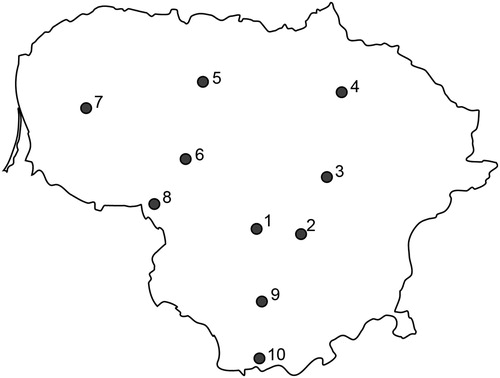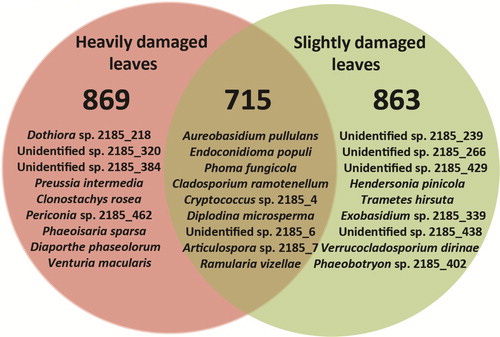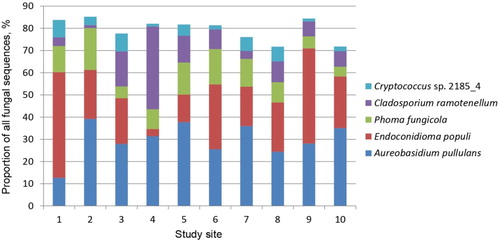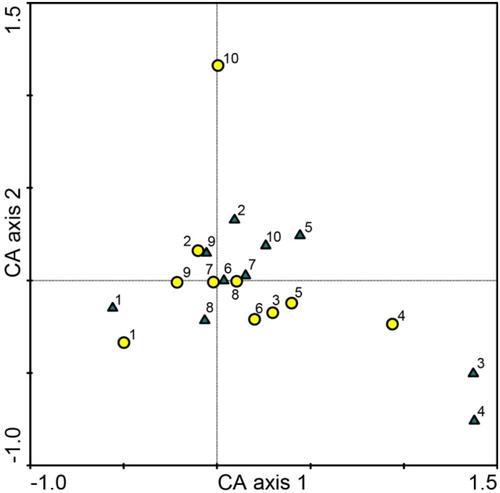Figures & data
Figure 1. Map of Lithuania showing 10 study sites in which heavily damaged and slightly damaged leaves of A. hippocastanum were sampled. Sites are numbered as in .

Table 1. Sampled heavily and slightly damaged leaves of A. hippocastanum, generated high-quality ITS rRNA fungal sequences and detected diversity of fungal taxa.
Table 2. Relative abundance of the 20 most common fungal taxa directly sequences from heavily and slightly damaged leaves of A. hippocastanum sampled in 10 study sites in Lithuania.
Figure 2. Venn diagram showing the overall diversity of fungal taxa (data pooled from all sites) and nine most common fungi exclusively found in heavily and slightly damaged leaves of A. hippocastanum, and overlap between both types of samples. The fungal taxa are top-down listed in descending order of occurrence as in Supplementary Table 1.



